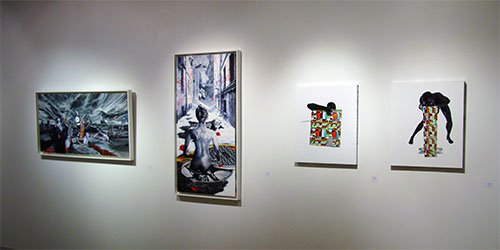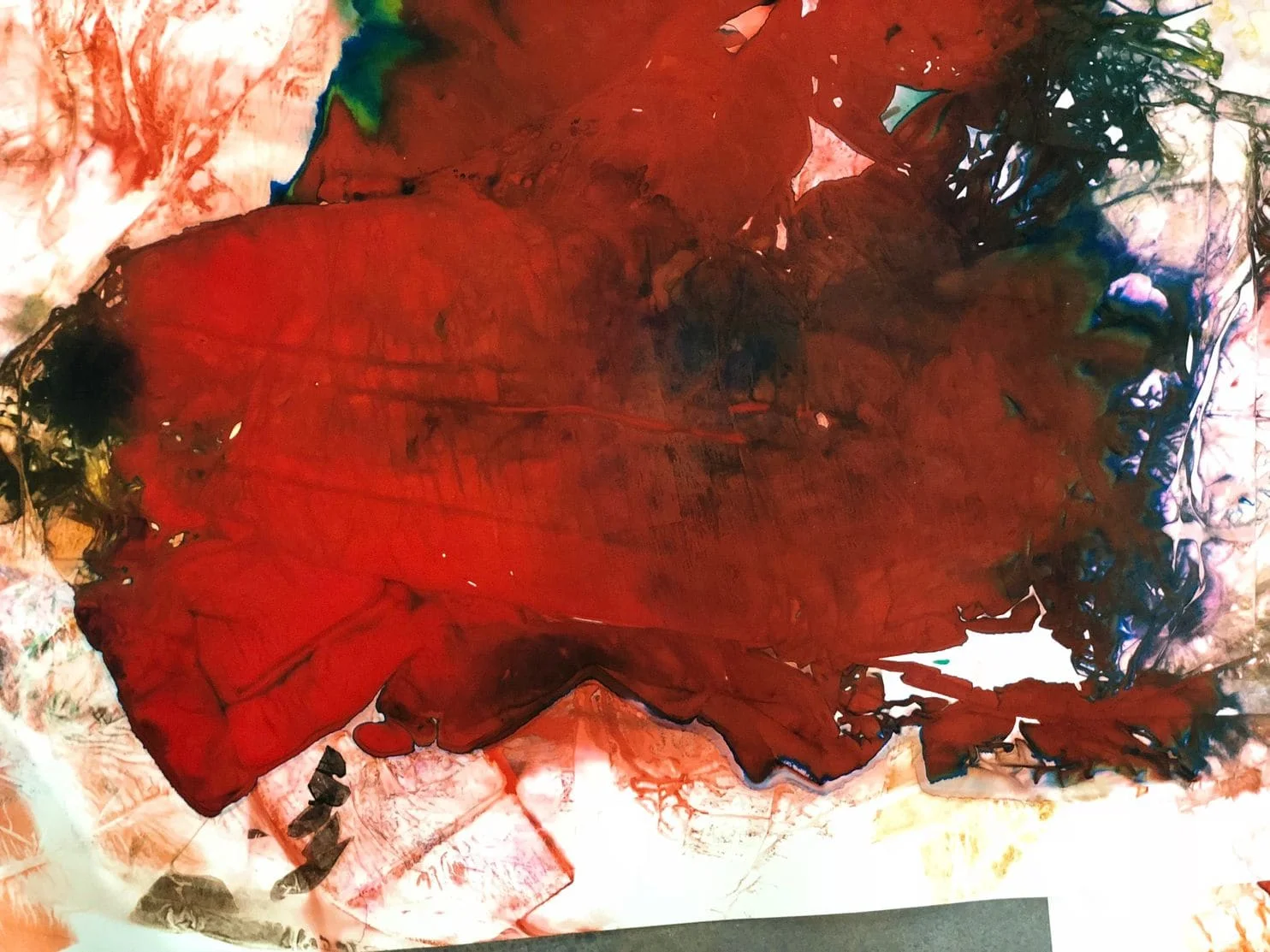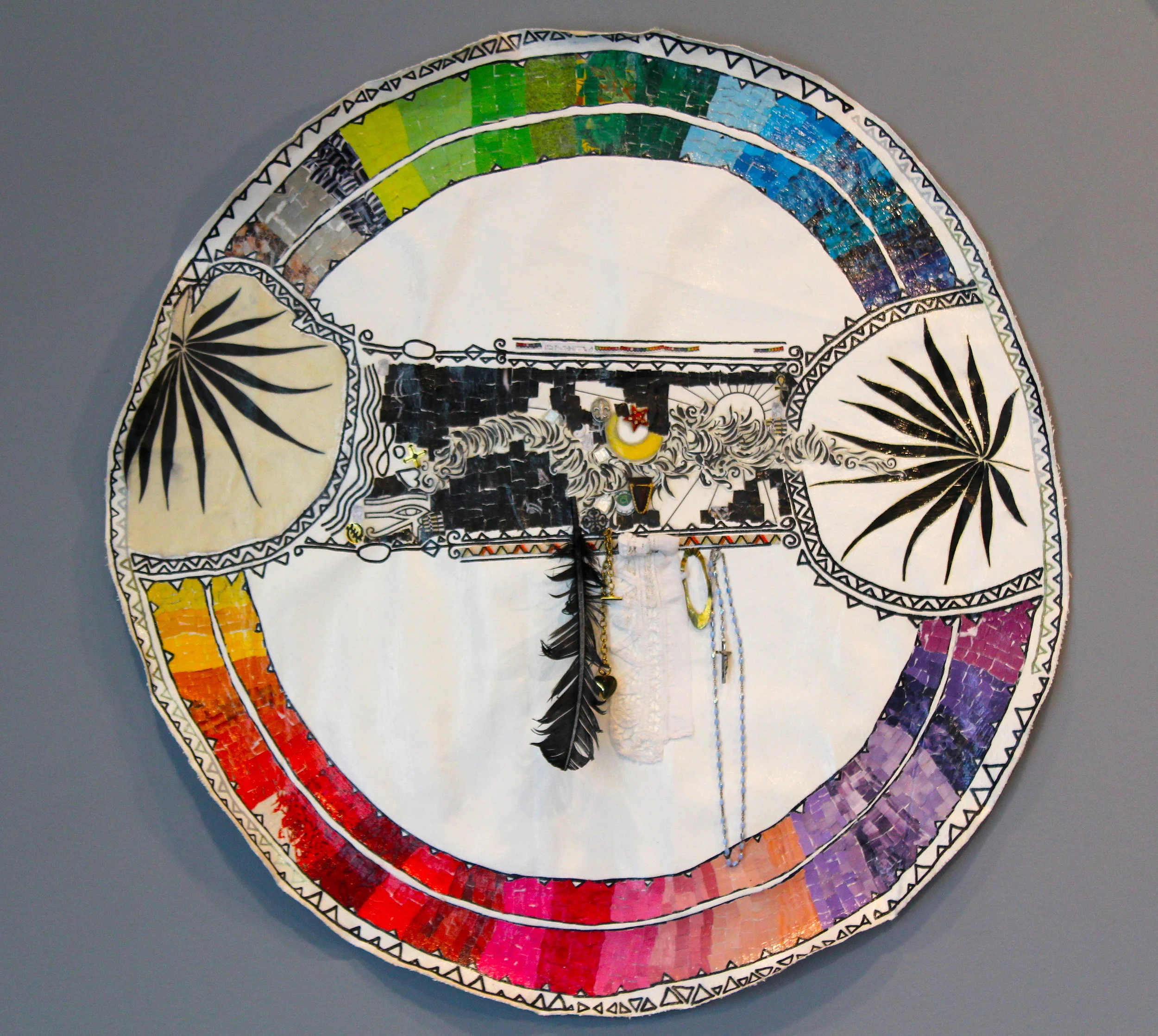People, food, and horticulture are among the things that move. Amber Robles-Gordon’s use of the Ficus Elastica is part of the symbology that reverberates throughout her exhibition, Successions: Traversing US Colonialism, on view at the American University Museum at the Katzen Arts Center in Washington, DC, through December 12, 2021. The Ficus Elastica—colloquially known as the rubber tree—has its roots in South Asia, though it was later nativized in the West Indies through the rubber trade. Dear reader, among your houseplants you are likely to find the genus of the rubber plant.
Read MoreWashington Post
Third Eye Open Solo Exhibition Catalog Statement by Kimberli Gant, PhD
“…an Earth alive in my consciousness as a living crystal being whose etheric geometric skeleton could be mapped in its patterns of energy flows…in ocean currents, the winds, river systems, and distributions of precious minerals. It seemed to me that ancient humans had known this sacred, hidden body of Earth and had settled on it in ways that took advantage of very visceral powers of place.”
-Bethe Hagens
The Divine Feminine in Geometric Consciousness (2010)
Hagen’s quote suggests that one can map the Earth not just through national borders, but through the power of the natural environment and the sacred energy that flows through those spaces. To her geometry is not simply a tool for measuring distances or volumes of space, but a way to consider invisible sacred energies helping keep the Earth functioning as it should. Each aspect of the environment works together creating a harmonious system. Hagen’s quote also hints at the legacy of geometric symbols moving beyond practical units, into sacred objects representing notions of infiniteness, and the unity of male and female. Moreover, depictions of spheres, circles, triangles, and their three-dimensional counterparts have used in rituals by numerous cultures spanning the world from ancient times into the present day…
Read MoreMaya Freelon’s “Bubble 2,” on view at Morton Fine Art. (Maya Freelon/Morton Fine Art)
Freelon & Robles-Gordon
by Mark Jenkins, Washington Post
Fabric scraps and damaged tissue paper are the essential ingredients of new work now at Morton Fine Art. Those materials might sound negligible, but Amber Robles-Gordon and Maya Freelon employ them with ambition and impact.
Robles-Gordon, a D.C. native, is known for hanging strands of textiles and other found objects in intricate arrangements. The pieces in her “Third Eye Open” are wall-mounted rather than suspended, and feature circular drawing-collages orbited by smaller rounded objects, some partly covered in bits of garments. The forms suggest zygotes and planets, as well as eyes, but at the heart of each of the larger circles is a leafy motif. Whether seen as cosmic or botanical, the artist’s circling compositions exalt natural cycles.
Read MoreAwakening the Matrilineal: Calling in the West, mixed media on canvas, 36" x 36"
Artist Introduction: AMBER ROBLES-GORDON
Morton Fine Art is thrilled to introduce artist AMBER ROBLES GORDON to our roster.
"My artwork is a visual representation of my hybridism: a fusion of my gender, ethnicity, cultural, and social experiences. I impose colors, imagery, and materials that evoke femininity and tranquility with the intent of transcending or balancing a specific form. I associate working with light, color, and energy as a positive means to focus on the healing power found in the creative process and within us all. It is my belief that colors have both feminine and masculine energies and each color represents a specific aspect of nature."
Read MoreThe art of Amber Robles-Gordon is the art of Anacostia, quite literally.
Robles-Gordon cobbles together sculptures and canvas collages from scraps of paper and fabric she finds in the neighborhood’s trash cans and storefront windows. She’s shown her work at the Honfleur Gallery. Right now, she has a striking wire and fabric mesh artwork on view near the Deanwood Metro stop.
But as ARCH Development Corporation continues to expand its constellation of arts destinations in Anacostia—the latest is the Anacostia Arts Center on Good Hope Road SE—Robles-Gordon wonders if her neighborhood will still have room for her.
There’s a tendency to see Anacostia, long on talent and struggle but short on just about everything else, as a blank canvas. With the right kinds of art and advertising, the thinking goes, Anacostia can become a hub for the creative class. But who gets left out?
Subtle Attention-Seekers Without Strings

Delusions of Grandeur seems about right for the name of an artists’ collective showing in a hole in the wall in Brentwood.
Located on the second floor of the Gateway Arts Center, the 39th Street Gallery is a 450-square-foot box that has been known to put on pretty cool little shows, including a recent micro-retrospective of the great D.C. painter Manon Cleary, who died last year. But the National Gallery of Art it is not.
Read More‘Options 2011’ combines minimal and conceptual art
By Mark Jenkins
Washington Post
For its 30th annual survey exhibition, “Options 2011,” the Washington Project for the Arts has temporarily claimed a floor of an industrial building near the Convention Center. The space gives the show — curated by Arlington Arts Center Executive Director Stefanie Fedor — room for large, dramatic pieces, as well as the expected painting, photography and video. The work ranges from computer animation and fabric art — including Amber Robles-Gordon’s third gallery showcase of the last six months — to issues of Bittersweet, a new magazine that covers social issues of non-federal D.C.
Many of the 13 artists combine the minimal and the conceptual. John James Anderson combines sculpture made from lumber, nails, screws and carpentry tools, with commentary about hiring immigrant day laborers to work with him. Stewart Watson impales pillows with steel rods to make site-specific, anxiety-ridden “events.” Lisa Dillin’s photographs and sculptures coolly parody corporate environments and mindsets. Heather Boaz renders the commonplace eerie by photographing toy furniture posed on or near body parts such as eyes and knees, as well as less commonly displayed ones.
Among the show’s most engaging work are monumental pieces that mock artistic monumentality. Artemis Herber is showing shell-like forms that look to be made of rusted steel, evoking the sculptural colossuses of Richard Serra and Anthony Caro, along with pillars whose shapes are modeled on fallen trees (although they’re painted a shade of green that’s more redolent of celery than forests). But Herber’s work is made of cardboard; that rusty patina is paint.
Jimmy Miracle also uses inexpensive materials, including plastic carryout food containers. For “Beam,” he stretches filament from wall to floor to simulate a gleaming shaft of light. Like Herber’s “trees,” Miracle’s pieces give everyday stuff a pretense to glory.
‘Delusions of Grandeur’
The Washington Post
One link between the three young, local artists featured in “Delusions of Grandeur: Ascension” is African American identity. Another is fabric. Amber Robles-Gordon (whose work was reviewed by The Post in July) makes abstract hanging assemblages that feature ribbons and scraps. Jamea Richmond-Edwards does idealized portraits that incorporate textiles, sequins and bows. Shaunte Gates includes bits of cloth and other found materials in allegorical paintings that draw on the tradition of biblically themed medieval and Renaissance canvases, but also sometimes suggest the heroic poses of sci-fi and comic-book characters.
The artists chose the exhibition’s title, and in a statement explain that it refers to “the ‘delusions of grandeur’ that each artist possesses in order to continue progressing . . . in their artwork.” The “ascension” part comes from one of Gates’s paintings, which depict muscular men who are both divine and debased, as likely to sprout wings as to wear to a crown of barbed wire. His figures are rendered realistically, as are some of his settings, notably the urban alley shown in “January 6, 1956: Time Traveler.” But other backdrops are wilder, sometimes verging on abstract expressionism. “May 28, 2004: Lost One” shows a man plunging into a loosely rendered whirlpool, as if diving into the picture plane itself.
Richmond-Edwards’s work is more formal. Faces, penciled in shades of gray, combine African American features with the somber bearing of Greco-Roman sculpture. Many of the countenances are identical, giving the work a paper-doll quality. These visages are surrounded by bright colors and patterns, and adorned with a rose-petal print in various colors. If the result seems a little too fashion-schooled, clothing is a part of cultural identity. Playing dress-up is one way that people define, or redefine, themselves.
Jenkins is a freelance writer.
Artists:
Delusions of Grandeur: Ascension on view through Sept. 16 at Parish Gallery-Georgetown,
1054 31st St. NW, 202-944-2310,
Washington, DC
www.parishgallery.com.www.washingtonpost.com/lifestyle/style/photos-reach-deep-into-go-gos-pocket/2011/08/31/gIQAAaq6uJ_story_1.html
Young black professionals: The new face of gentrification
Washington Post
Anacostia, a neighborhood once synonymous with crime and violence, now offers yoga studios and chai lattes. Young black professionals are spurring development and gentrification of Ward 8.
Amber Robles-Gordon works in the living room of her Anacostia home. Gordon earned an Master of Fine Arts degree from Howard University.
In addition to making art, Gordon teaches yoga at Anacostia’s Spirit Anacostia Health and Wellness Center. Her commute to work is 10 minutes.
Amber Robles-Gordon displays her work at the Pleasant Plains Workshop, a shared studio space on Georgia Avenue.
Bonnie Jo Mount / The Washington Post
Click here for the full article
Wild Fabric
By Mark Jenkins, The Washington Post
Read More



